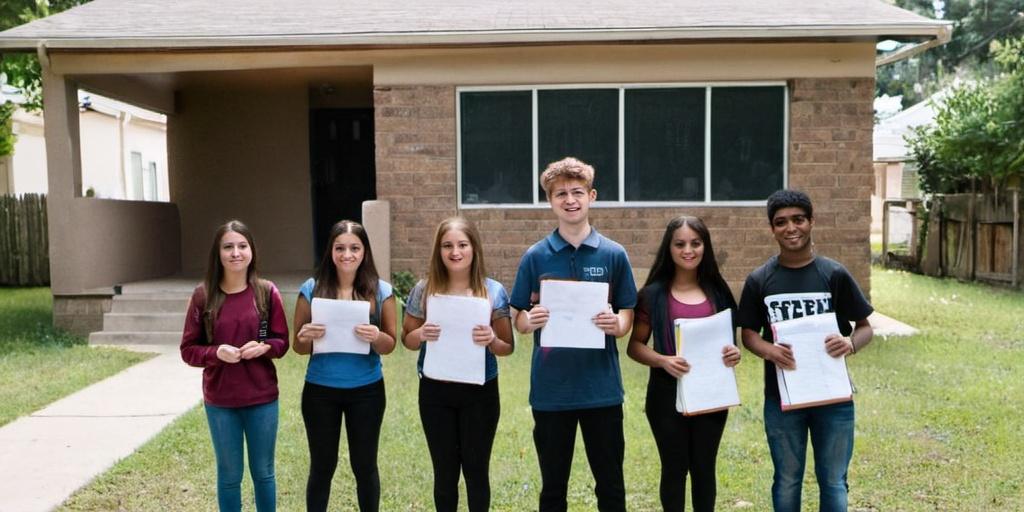Expected Yield of a Student Rental
The expected yield of a student rental property varies widely depending on location, property type, tenant profile, and management structure. That said, student rentals typically offer higher gross yields than standard residential buy-to-let properties. This is primarily due to the per-room rental model, which allows landlords to generate more income from a single property. But those higher gross returns often come with increased management costs, regulatory overhead, and property wear and tear—factors that impact net yield significantly.
Understanding both gross and net yield is essential when evaluating a student rental investment. While many listings advertise attractive gross figures, the real performance of a student rental depends on how efficiently the property is managed and how reliably it is let each year.

Typical Gross Yield Ranges
In established university towns or cities with strong student demand and limited supply of purpose-built student accommodation (PBSA), gross yields on student rentals often fall in the 6% to 10% range. In some high-demand, lower-cost areas—especially those with multiple universities and housing shortages—gross yields may exceed 10%, especially if the property is fully licensed as an HMO and configured with four or more rentable bedrooms.
For example:
- In northern UK cities like Liverpool, Nottingham, or Sheffield, a well-located student HMO may achieve gross yields of 8%–12%, assuming consistent occupancy and market rent levels.
- In more expensive cities like London, Oxford, or Cambridge, gross yields may be lower—often around 5%–7%—but capital growth tends to be stronger, which alters the long-term return profile.
- In U.S. college towns with large public universities, properties close to campus can achieve gross yields of 7%–9%, although regional differences in tax, insurance, and zoning laws can influence net returns significantly.
Gross yield is calculated simply as:
Gross Yield (%) = (Annual Rent ÷ Property Purchase Price) × 100
So, a student rental generating £28,800 annually (£600 per month per room for four tenants) on a £320,000 purchase price would show:
Gross Yield = (£28,800 ÷ £320,000) × 100 = 9%
But this figure doesn’t reflect the full picture.
Net Yield: What You Actually Keep
Net yield takes operating expenses into account and gives a more realistic picture of how profitable a student rental is. These expenses typically include:
- Letting and property management fees
- Maintenance and repairs
- Void periods between academic years
- Licensing and safety compliance (especially in HMOs)
- Insurance (including specialist landlord cover)
- Utility bills and broadband (often included in rent)
- Council tax (if not exempt, e.g. during voids)
- Wear and tear, cleaning, and furnishing costs
A conservative estimate of net costs for a self-managed student property often falls between 20% and 35% of gross rental income. If the property is fully managed by a letting agent, or if extensive annual refurbishment is required, costs can rise above 40%.
Using the earlier example:
Gross income: £28,800
Estimated operating costs (30%): £8,640
Net income: £20,160
Net Yield = (£20,160 ÷ £320,000) × 100 = 6.3%
For many landlords, a net yield of 5%–7% on a student property is realistic and sustainable—higher than the typical net yield for standard single-let residential properties, which often sit in the 3%–5% range after costs.
Factors That Push Yield Up or Down
Several factors can move a student rental’s yield outside the expected range.
Push yield higher:
- Renting each room individually on separate agreements (more admin, but more income)
- Offering bills-inclusive rent and charging a slight premium
- Adding en-suites or additional bedrooms during refurbishment
- Self-managing the property rather than using agents
- Investing in lower-cost cities with strong university growth but low PBSA supply
Push yield lower:
- Extended void periods during summer if fixed-term tenancies aren’t used
- Properties in oversaturated markets or declining university towns
- High upfront costs for licensing, fire safety upgrades, or legal compliance
- High management fees (some student lettings agents charge 10%–15% plus VAT)
- Tenants leaving early or causing damage, leading to unplanned costs
Yield vs Capital Growth
In student property investment, it’s important not to assess yield in isolation. High-yield properties are often found in lower-value areas with limited long-term capital growth potential. Conversely, properties in cities with strong job markets and rising house prices may offer lower yields today but higher exit values later. The best student rentals balance both—solid rental income and moderate long-term appreciation.
Conclusion
A well-located, legally compliant, and professionally managed student rental can realistically deliver a net yield of 5% to 7% per year. In strong university cities, gross yields can reach 8% to 10% or more, but headline numbers must be tempered with a clear-eyed view of annual costs, turnover, and regulation. Investors focused solely on yield risk underestimating the operational demands. Those who factor in both rental income and long-term asset performance are more likely to achieve sustainable results.
